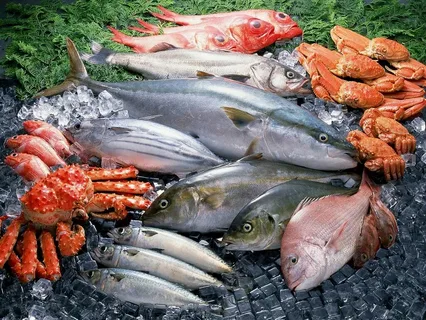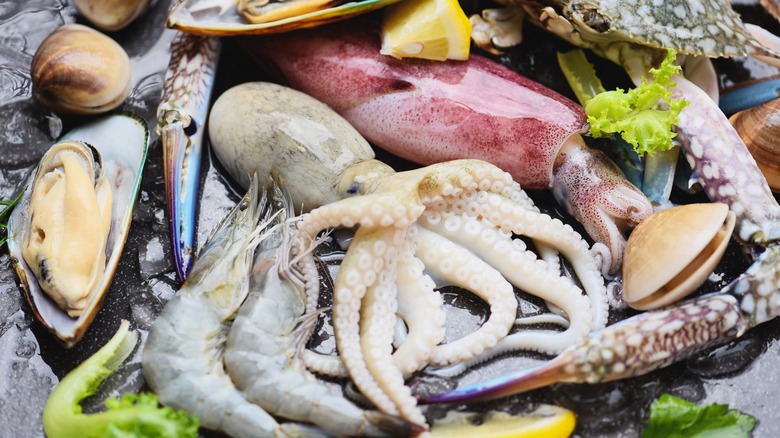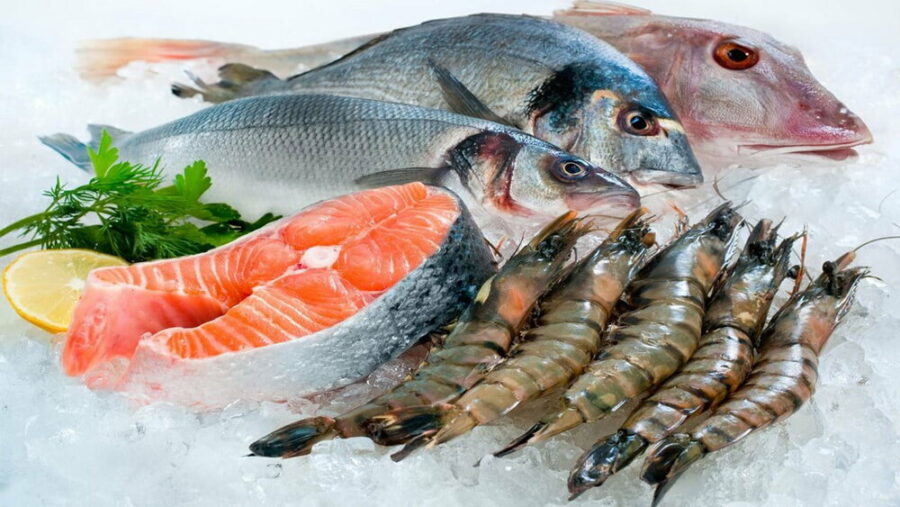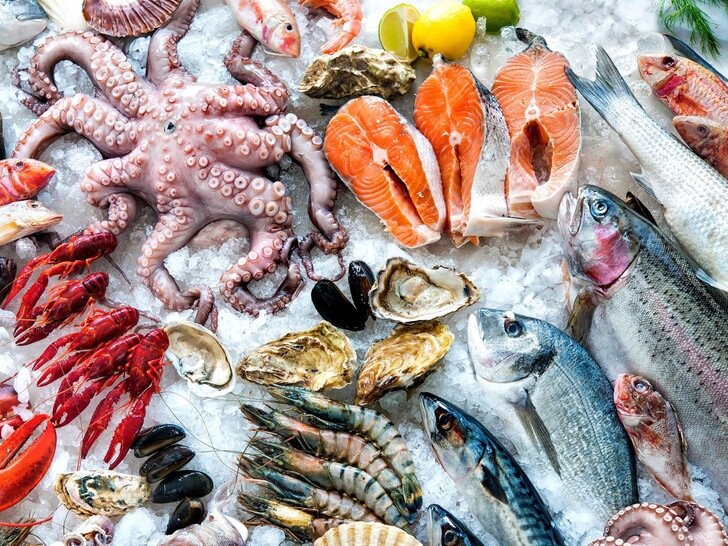The Allure of Fresh Seafood
Fresh fish and shrimp are regarded as a symbol of happiness and longevity in Asia.
But here’s the thing (pun intended): getting there—where seafood tastes like it’s meant to—starts long before the fish hits your pan.
In this manual, we’ll take you through it step-by-step—from the moment you arrive at the fish counter to when you plate up your magnum opus. It’s your ultimate guide to success with seafood.

The Basics of Fresh Fish
Why Freshness Matters
Fish is perhaps the most fragile protein you can prepare with. Unlike poultry or red meat, seafood goes bad quickly if mishandled. The distinction between a recently filleted fish and one that’s gone bad isn’t slight. Old fish has an overpoweringly “fishy” odour, a slimy texture, and tastes wrong. Fresh fish, on the other hand, has a clean smell, a firm texture, and an almost sweet smell.
Wild-Caught vs. Farm-Raised
One of the initial choices you will make is whether or not to go with wild-caught or farm-raised fish. Both offer advantages and disadvantages:
Wild-Caught: Often seen as the gold standard for flavor and sustainability. Wild fish have varied diets and swim freely, which can lead to a more complex flavor and firmer texture. However, they are often more expensive and subject to overfishing concerns.
Farm-Raised: These are bred in controlled environments. The flavor might be milder, but modern aquaculture has improved dramatically. If sustainably farmed, they can be an eco-friendly and affordable choice.
How to Buy Fresh Fish Like a Pro
Where to Shop
Fish Markets: These are often the best places for variety and freshness. Look for places with high turnover, which usually means fresher product.
Grocery Stores: Chain supermarkets can be hit or miss. Some have excellent seafood departments; others lacklustre.
Online Retailers: Believe it or not, many companies now offer overnight shipping of flash-frozen seafood. This is especially useful if you live inland or in a seafood desert.
What to Look For
Whole Fish
When buying a whole fish, check:
Eyes: They should be clear, not cloudy.
Gills: Bright red or pink, never brown or gray.
Skin: Shiny with tight scales.
Smell: Fresh, like the ocean or a clean breeze.
Fillets
If buying fillets, make sure
They’re not mushy or slimy.
Edges aren’t discoloured.
They smell fresh, not “fishy.”
Asking the Right Questions
“When was this fish delivered?”
“Is this wild or farmed?”
“What do you recommend for grilling or steaming?”

The Art of Storing Fresh Fish
Short-Term Storage
Place the fish on a plate.
Cover it with plastic wrap.
Sit it in a bowl filled with crushed ice.
Replace the ice as it melts.
Freezing Fish
Wrap Tightly: Use vacuum-sealing or double-wrap in plastic, followed by aluminium foil.
Label It: Include the date and type of fish.
Freeze Fast: Flash freezing (quick freezing) preserves texture better than slow freezing.
Thawing
Please place it in the refrigerator overnight.
Or use the cold-water method: seal it in a bag and submerge it in cold water, changing the water every 30 minutes.
Cooking Techniques for Maximum Flavor
Grilling
Best for firm fish like salmon, swordfish, or tuna.
Oil the fish and the grill grates.
Use high heat and avoid flipping too often.
Cook with skin-on if possible—it helps hold the fish together.
Pan-Searing
Ideal for snapper, trout, or halibut.
Use a hot, nonstick or cast-iron skillet.
Pat the fish dry to get a good crust.
Cook skin-side down first.
Baking
Works well for whole fish and fillets.
Add citrus, herbs, and wine in a foil packet for a moist, flavorful dish.
Poaching
Best for delicate fish like cod or sole.
Use a broth, wine, or milk at a low simmer.
Gently slide the fish in and cook until opaque.
Steaming
Gentle and healthy.
Use a bamboo steamer or a steaming rack in a pot.
Fish cooks in its own juices and retains moisture.
Frying
Perfect for small fish or fillets.
Coat in flour, cornmeal, or batter.
Use a neutral oil at 350°F (175°C).
Drain on paper towels.

Seasoning and Saucing
Lemon-Butter Sauce: Classic and simple.
Herb Pesto: Bright and herbal, great on grilled fish.
Creamy Dill Sauce: Pairs beautifully with salmon.
Miso Glaze: A sweet-salty umami bomb, excellent on cod or black bass.
Pairing Fish with Sides and Drinks
Side Dishes
Light Grains: Quinoa, couscous, or jasmine rice.
Fresh Vegetables: Grilled asparagus, sautéed spinach, or roasted root veggies.
Zesty Salads: Arugula with lemon vinaigrette or a citrusy slaw.
Wine and Beverage Pairings
White Wines: Sauvignon Blanc, Pinot Grigio, or Chardonnay.
Rosé: Versatile and food-friendly.
Beer: Try a wheat beer with fried fish or a pilsner with grilled fillets.
Non-Alcoholic: Sparkling water with lemon, cucumber juice, or green tea.
Mistakes to Avoid
Overcooking: Fish cooks fast. Monitor closely. When it flakes easily and is opaque, it’s done.
Skipping the Smell Test: If it smells bad, don’t eat it—no exceptions.
Using the Wrong Method: Match the cooking method to the type of fish.
Crowding the Pan Leads to steaming instead of searing.
Not Drying the Fish: Moisture prevents browning.

Conclusion
Fresh fish is daunting—until you learn to handle it. Choosing the correct piece, handling it gently in the market, and treating it with some deference in the kitchen can transform your meals. It’s a learned skill, as any other skill, that takes time and patience, but few pleasures are sweeter than lifting a perfectly cooked fillet from the pan and tasting the sea at home.
So next time you are walking by the fish counter, do not just keep going. Stop. Look. Ask questions. Select something fresh. Bring it home. And cook with confidence.
Your seafood adventure has just started.
FAQs
How can I tell if the fish is fresh at the market?
Fresh fish should have clear, bright eyes, firm flesh, shiny skin, and a clean, ocean-like smell. Avoid any fish with cloudy eyes, dull color, a strong “fishy” odour, or mushy texture.
How long does fresh fish last in the refrigerator?
It is best to consume fresh fish within one to two days of purchasing it. Store it in the coldest part of your fridge (ideally at 32°F or 0°C), ideally on crushed ice in a bowl.
Can I freeze fresh fish?
Yes! To freeze fish safely:
Wrap it tightly in plastic wrap or vacuum-seal it.
Label it with the date and type.
Freeze it as quickly as possible. It can stay good for up to 3 months in a standard freezer.
How do I know when the fish is cooked?
Fish is done when
It flakes easily with a fork.
The flesh is opaque throughout.
An internal temperature of 145°F (63°C) is reached (according to USDA guidelines).
What’s the best way to thaw frozen fish?
Thawing it overnight in the refrigerator is the safest method. If you’re in a hurry, place the sealed fish in a bowl of cold water, changing the water every 30 minutes.
What fish are best for beginners to cook?
Start with:
Salmon: forgiving and flavorful.
Tilapia: mild and easy to cook.
Cod: great for baking and frying. These are versatile, easy to find, and cook well with various techniques.
Can I eat the skin on fish?
Yes! The skin is delicious when properly cleaned and crisp-cooked, like on salmon or trout. Just make sure to scale it first










